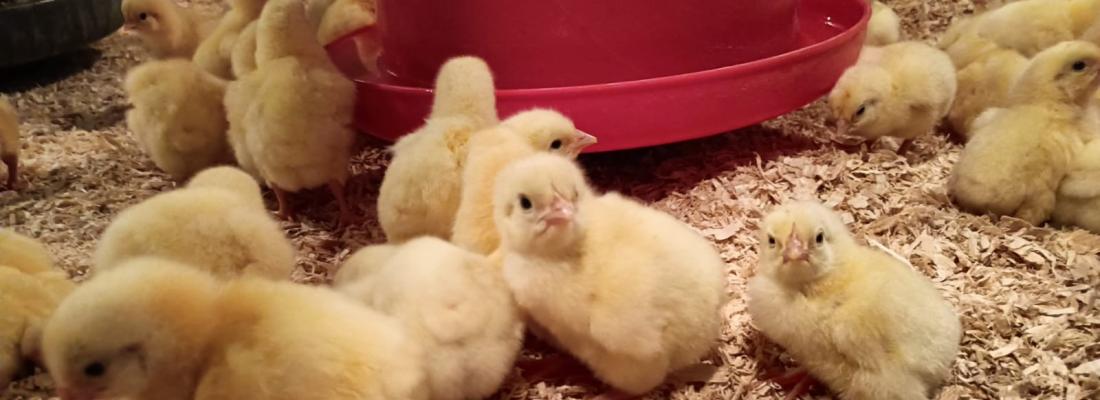Agroecology Reading time 3 min
Fewer proteins and less potassium in feed: a strategy for reducing the environmental impact of broilers
Published on 13 June 2025

Poultry production, which is constantly growing, is faced with major environmental challenges, in particular nitrogen (N) losses in the form of gases such as ammonia (NH₃) and nitrous oxide (N₂O). These losses have negative impacts on the environment on local scales, such as eutrophication or soil acidification, but also on global scales, such as climate change. Against this backdrop, this study looks at the effect of reducing the crude protein content and electrolyte balance* (i.e. the balance between different mineral salts, including potassium) of broiler feed on the nitrogen balance, litter composition and gaseous emissions from farms.
Two successive trials were carried out on 888 male chicks of the ‘Ross 308’ strain reared to 35 or 37 days of age, in 12 controlled environment chambers designed to measure ammonia (NH3) and nitrous oxide (N2O) emissions.
Four diets were tested: a control diet (C), a diet with reduced crude protein and potassium content (PB-) and two diets with the same reduced protein content, but with an electrolyte balance corrected by adding potassium (PB-K+) or sodium (PB-Na+). In the PB- diets, soya meal was almost entirely replaced by rapeseed meal and cereals (-67 to -91%).
The results showed that:
- The PB- diet reduced nitrogen excretion by around 32% and NH₃ emissions per chicken by 47% (PB-K+) to 72% (PB-).
- The rate of nitrogen volatilisation (the proportion of excreted nitrogen transformed into gas) also decreased, reaching 10-19% in the PB- diets compared with 30% in the C diet.
- The amount of N₂O emitted was not significantly altered by the different diets.
- The pH of the litter was reduced by the decrease in electrolyte balance (PB- diet), which contributes to a lower emission of NH₃.
- Nitrogen, sodium and potassium content, as well as litter pH, were significantly affected by the diets tested.
- Water consumption by the animals was reduced by 16-19% in the PB- and PB-Na+ diets compared with the control diet.
- Zootechnical performance was slightly degraded by the reduction in protein content, with a reduction in weight gain and feed efficiency of around 5-6%, but remained above commercial standards.
Reducing crude protein content in broiler feed, especially when combined with electrolyte balance adjustment, is an effective strategy for reducing nitrogen losses in the form of NH₃ on farms.
This study was a collaboration between INRAE and Laval University (Quebec, Canada) as part of the Nutri-Mod International Associated Laboratory.
*Electrolytes are mineral salts in the form of positively charged ions (e.g. sodium or potassium) or negatively charged ions (e.g. chlorine). They are essential for the body to function properly and are involved in many biological functions (water balance, maintenance of blood pH, etc.).
Reference: De Rauglaudre T., Méda B., Fontaine S., Lambert W., Simongiovanni A., Larios D., Godbout S., Fournel S., Létourneau Montminy M-P. , 2025. Influence of dietary crude protein and electrolyte balance on nitrogen budget and gas emissions in broilers. Biosystems Engineering, 56 : 104175
https://doi.org/10.1016/j.biosystemseng.2025.104175
